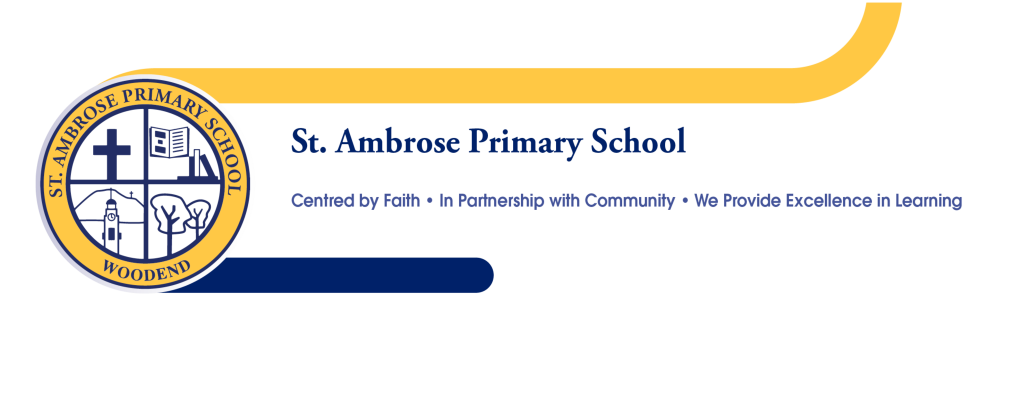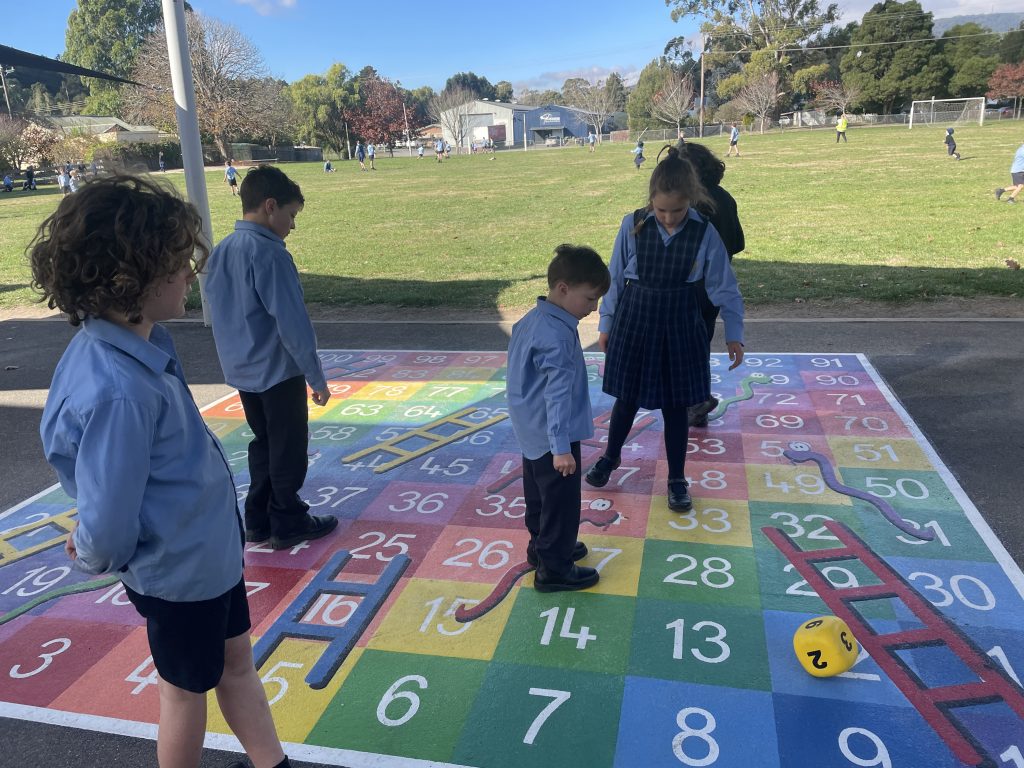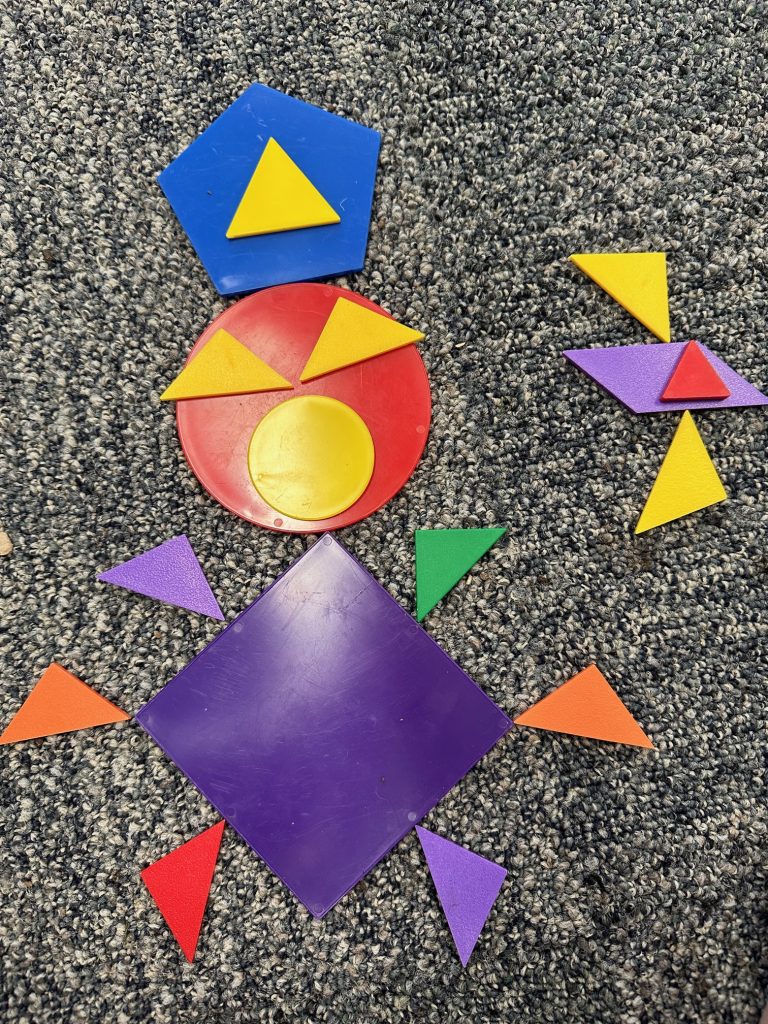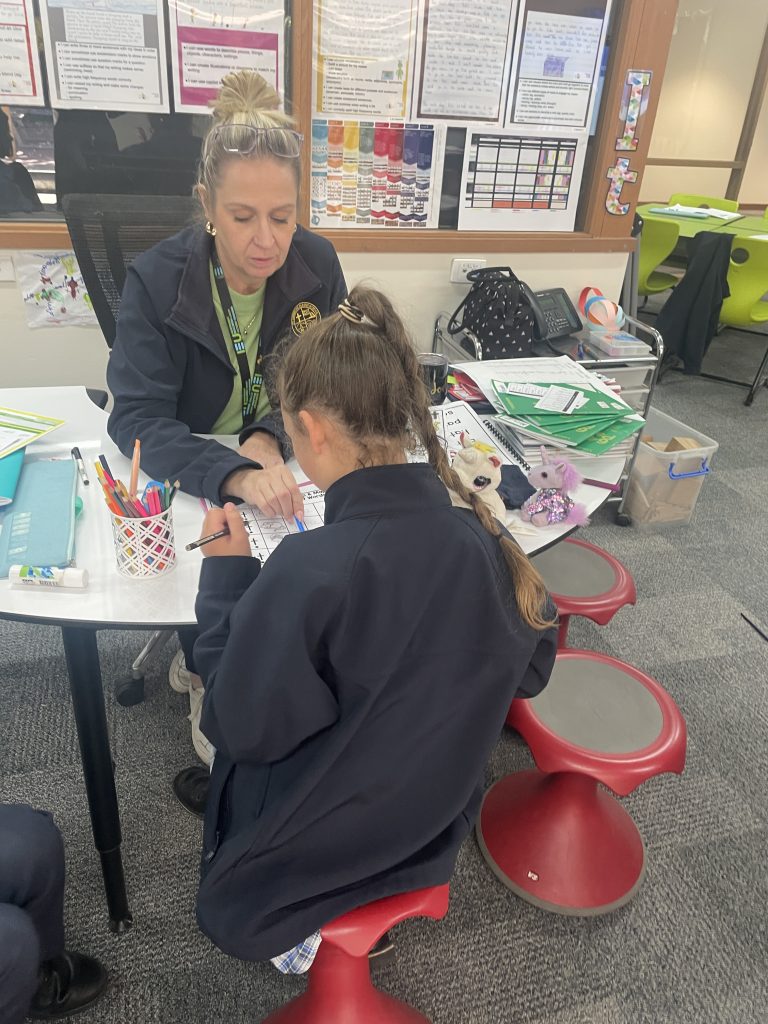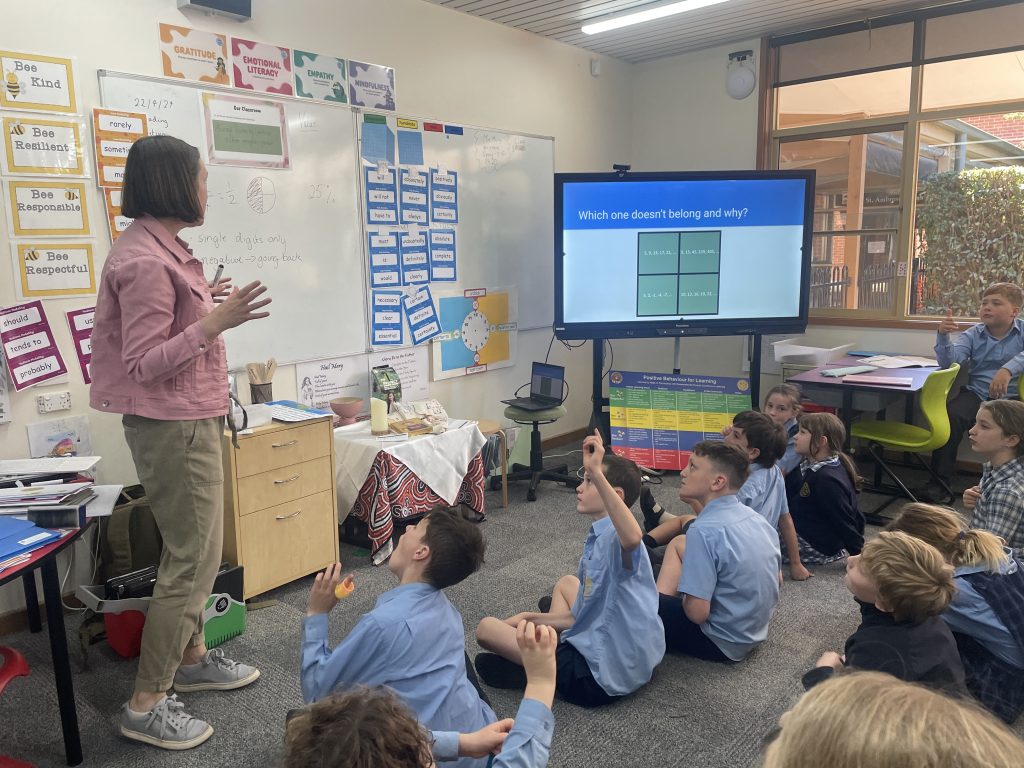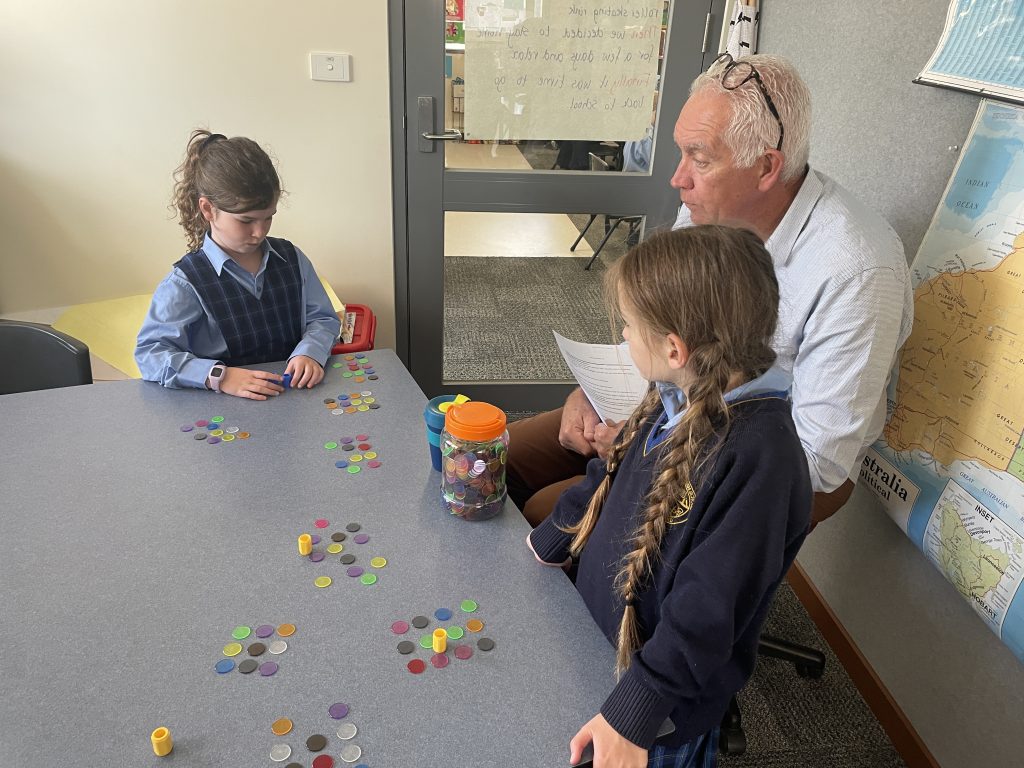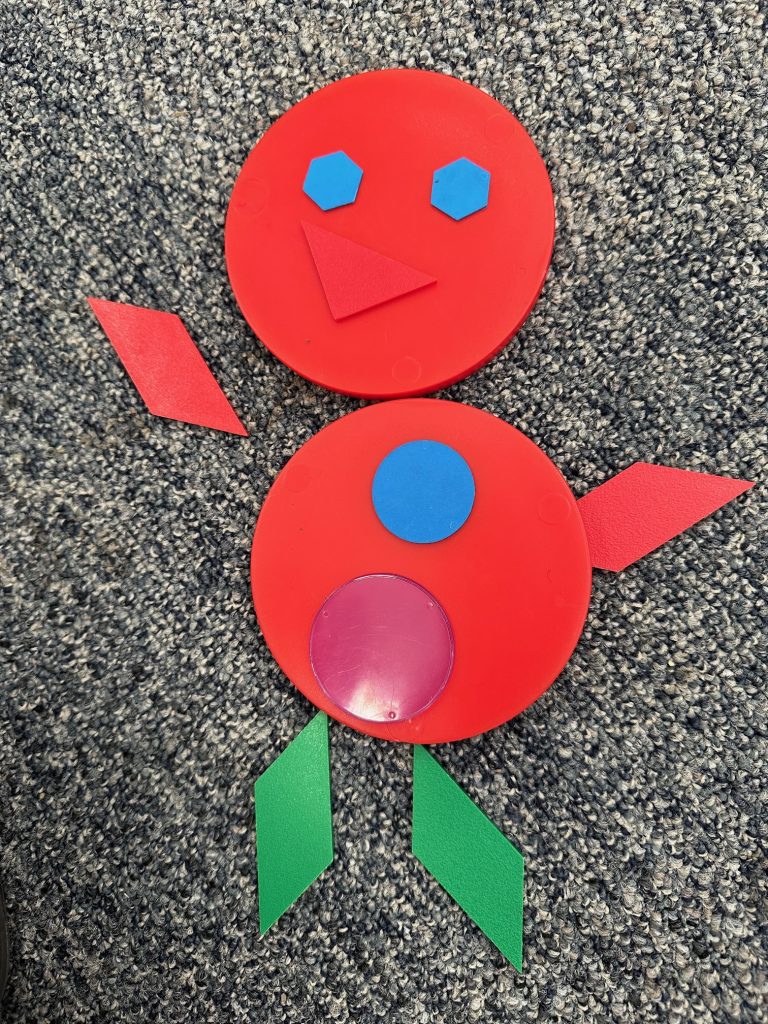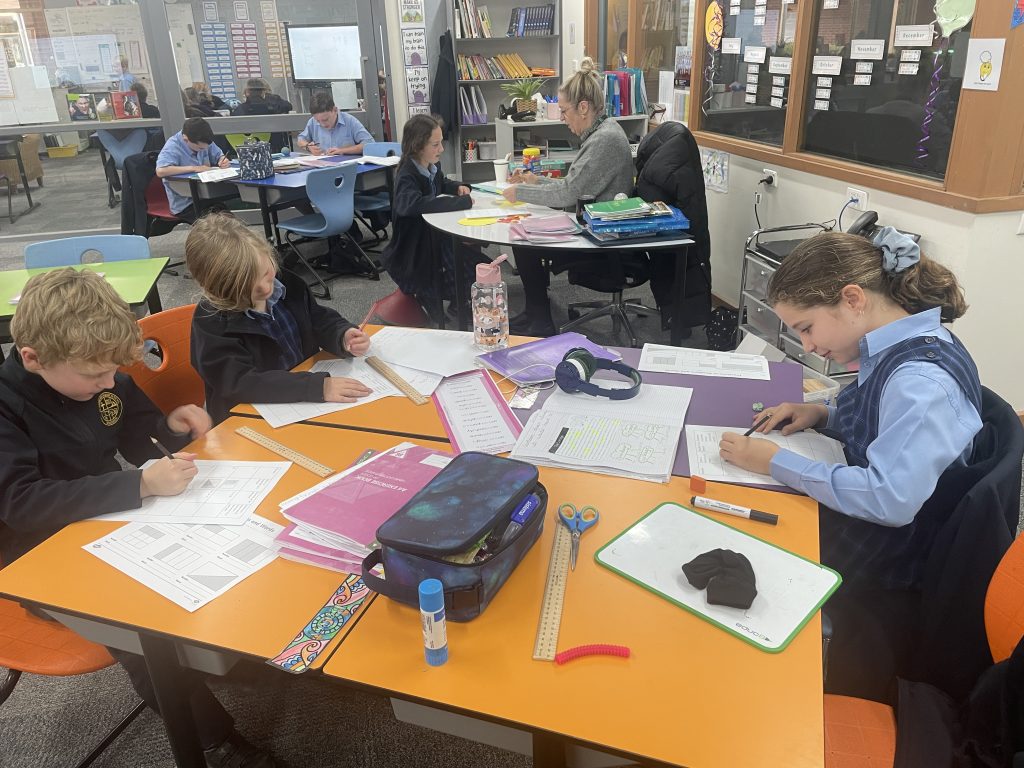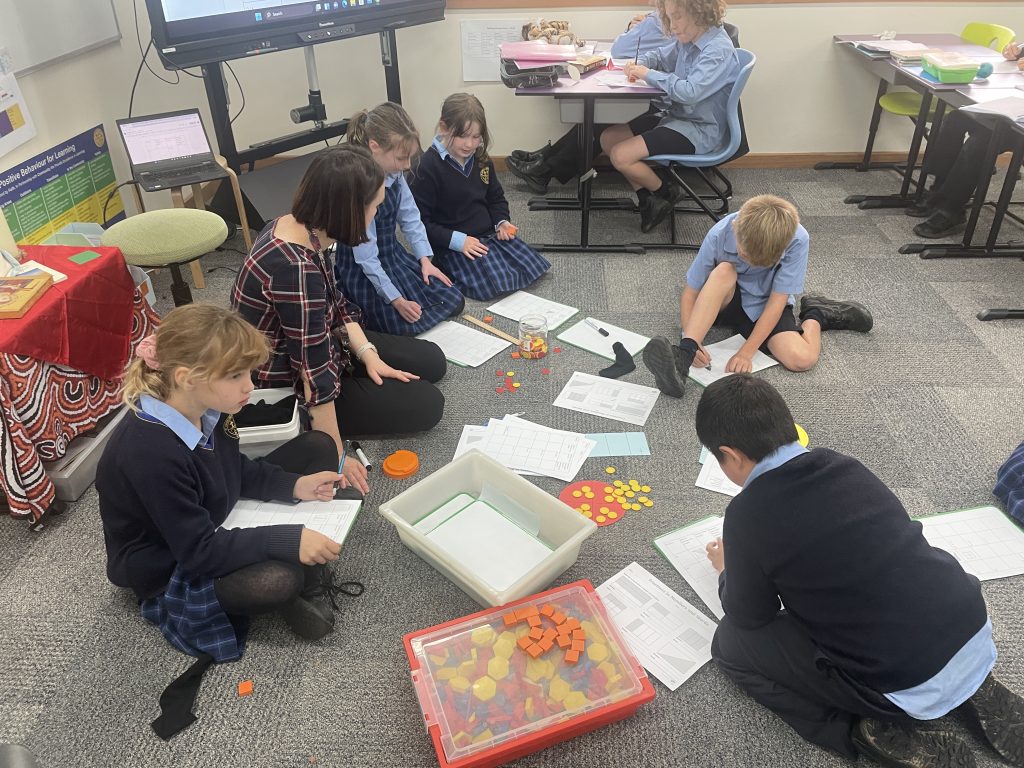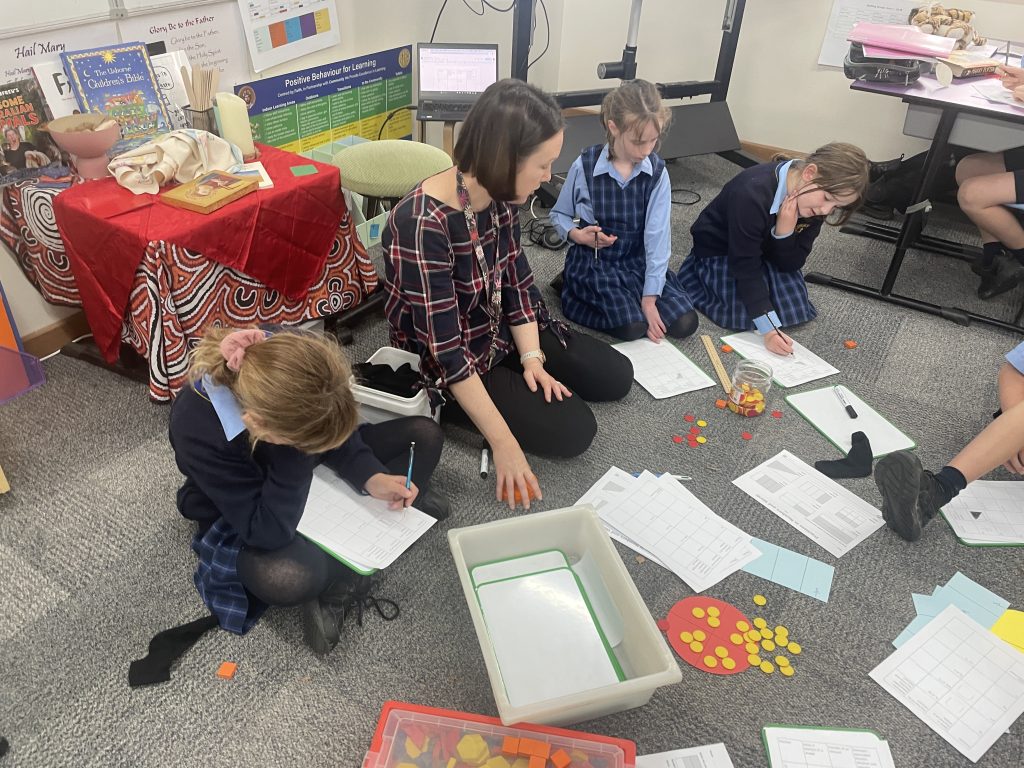 At St Ambrose Parish School, our teachers are focused on exploring better ways of teaching and learning Mathematics. We teach Mathematics with the vision to develop students as learners who can think for themselves in a flexible, critical and creative way.
At St Ambrose Parish School, our teachers are focused on exploring better ways of teaching and learning Mathematics. We teach Mathematics with the vision to develop students as learners who can think for themselves in a flexible, critical and creative way.
At St. Ambrose we are dedicated to developing a consistent whole school approach to the teaching and learning of Mathematics. We believe that a positive attitude and a growth mindset towards Mathematics can have a huge impact on student achievement and growth in this curriculum area.
The teaching and learning of Mathematics is embedded in evidence based practices including:
- Developing number sense and flexibility with numbers,
- Building fluency with number facts involving mental computation strategies to solve addition, subtraction, multiplication and division problems
- Explicit teaching of mathematics concepts, understanding the how and why of concepts in combination with procedures and rules
- Using hands-on concrete materials as well as visual representations to demonstrate and model mathematical thinking
- Explicit teaching of problem solving and reasoning strategies
- Using precise, correct and consistent mathematical language to learn and discuss mathematical concepts and problems
The explicit teaching model adopted at St. Ambrose involves using explicit instruction when introducing new content and gradually releasing the responsibility of problem solving to the students. This explicit instruction is highly interactive and images students in frequent checks for understanding.
Each Mathematics session begins with a review, where students have the time to rehearse and revise previously taught concepts and skills. The Mathematics lesson then follows an I do, We do, You do process. A Mathematical concept is fully explained or a problem is modelled step-by-step, students then participate in multiple opportunities for guided practice, once students demonstrate understanding they move onto independent practice. This model of teaching and learning incorporates opportunities for the teacher to monitor student progress and provide feedback as well as encourage students to express their thinking and explain their work orally and in written form.
The teaching and learning of Mathematics is data informed and based upon students’ varying needs and prior knowledge. Modelled examples and independent tasks are differentiated accordingly to support and extend the students’ learning as needed.
